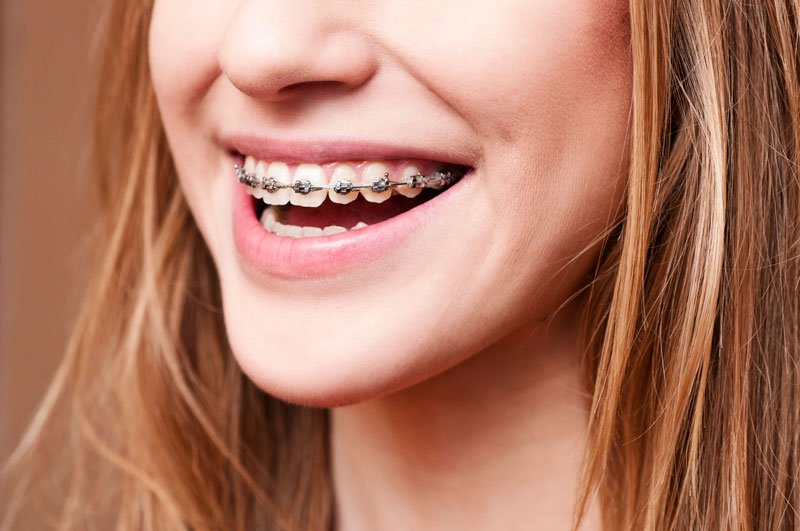Comprehensive Overview to Orthodontics Treatments for Fixing Dental Misalignments
In the realm of orthodontics, the journey to attaining a perfectly lined up smile involves a myriad of treatments tailored to remedy oral imbalances. From conventional braces to undetectable aligners and also surgical options, the area of orthodontics offers a variety of options to resolve differing levels of oral irregularities. Understanding the complexities of each treatment, including their mechanisms, benefits, and potential drawbacks, is vital in making notified decisions about one's orthodontic treatment. As we navigate via the thorough guide to orthodontic procedures for correcting dental imbalances, the intricate information of each method will unravel, shedding light on the course towards a functional and unified oral positioning.
Orthodontic Procedures Summary

In enhancement to standard dental braces and clear aligners, orthodontists may also suggest various other treatments like headgear, palatal expanders, or retainers to resolve details positioning problems (cumming braces). These procedures are customized to every individual's one-of-a-kind requirements and may entail a mix of therapies to accomplish the preferred results. Normal modifications and tracking are important parts of orthodontic therapy to ensure progress is on track and to make any required modifications along the road. By undergoing orthodontic treatments, people can not only attain a straighter grin but likewise enhance their general oral wellness and function.
Typical Dental Braces: Exactly How They Work
When thinking about orthodontic treatments for dental imbalances, standard dental braces stand apart as a reliable method for correcting teeth placing. Conventional dental braces consist of braces, wires, and bands that function with each other to apply continual pressure on the teeth, slowly moving them right into the wanted positioning. The braces are connected to the teeth using a special adhesive, and the cords are threaded with the braces. By adjusting the tension of the cables, orthodontists can control the instructions and pressure put on each tooth, guiding them right into proper placement with time.
As pressure is applied to the teeth with the dental braces, the bone surrounding the teeth is reshaped to support the brand-new tooth settings. People will certainly require routine modifications at the orthodontist's office to ensure the braces proceed to apply the correct pressure for effective teeth movement.
Undetectable Aligners: Cons and pros
Unnoticeable aligners supply a practical and discreet choice to traditional braces for fixing dental imbalances. These clear, personalized trays are practically unnoticeable when worn, making them an appealing option for people looking for a more aesthetically pleasing orthodontic treatment. Among the primary benefits of unseen aligners is their removability, permitting for simpler upkeep of dental hygiene compared to standard dental braces. People can remove the aligners prior to consuming or brushing their teeth, lowering the threat of food obtaining stuck in the appliance and streamlining the cleaning procedure.

Surgical Orthodontic Options
Surgical treatments in orthodontics present feasible choices for addressing intricate oral imbalances that might not be effectively solved through traditional orthodontic therapies. While undetectable aligners and conventional dental braces can fix numerous orthodontic problems, certain instances need surgical treatment to achieve ideal results. Surgical orthodontic choices are typically suggested for serious malocclusions, substantial jaw inconsistencies, and situations where the underlying bone framework needs alteration to achieve appropriate alignment.
One common medical orthodontic treatment is orthognathic surgical treatment, which entails repositioning the emergency orthodontist near me jaws to correct functional issues such as difficulty speaking or eating. This surgical procedure is commonly executed in collaboration with an orthodontist who aids align the teeth prior to and after the treatment. Surgical orthodontics might also involve treatments to reveal impacted teeth, eliminate excess gum tissue, or reshape the jawbone to create a more harmonious facial account.
Before considering medical orthodontic alternatives, people undertake a thorough evaluation to figure out the necessity and prospective advantages of such treatments. cumming braces. While surgical procedure may seem difficult, it can substantially boost both the function and appearances of the smile in cases where conventional orthodontic therapies fail
Retainers and Post-Treatment Care

Post-treatment care entails complying with the orthodontist's instructions carefully. This might consist of correct oral health methods, attending follow-up visits, and putting on the retainers as recommended. Failing to follow post-treatment care directions can result in relapse, where the teeth gradually return towards their initial settings. Regular retainer wear, good oral hygiene, and regular dental examinations are necessary for preserving the results attained with orthodontic surgical treatment and making certain the long-term stability of the corrected dental placement.
Conclusion
In conclusion, orthodontic procedures use different alternatives for remedying dental imbalances. Surgical orthodontic alternatives are readily available for extra extreme misalignments. Overall, orthodontic procedures can effectively boost dental wellness and visual look.
As we navigate through the extensive overview to orthodontic treatments for dealing with dental imbalances, the complex information of each technique will unfold, dropping light on the course towards a useful and unified dental placement. - aligners
One of the most usual orthodontic treatments is the use of dental braces, which are composed of steel brackets look what i found and cords that apply gentle stress to gradually change teeth right into the desired setting.When taking into consideration orthodontic therapies for dental misalignments, traditional dental braces stand out as a reliable technique for remedying teeth placing. Furthermore, undetectable aligners may not be ideal for complicated orthodontic issues that need more substantial teeth activity, as they are typically advised for light to modest cases. Retainers are personalized orthodontic tools designed to hold teeth in their dealt with positions after the completion of orthodontic treatment.